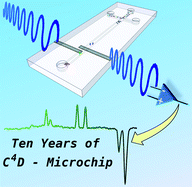Capacitively coupled contactless conductivity detection on microfluidic systems—ten years of development†
Abstract
The use of capacitively coupled contactless conductivity detection (C4D) on miniaturized systems has increased considerably over the last few years. Since the first report, 10 years ago, several advances on the detection cell geometry, strategies for increasing the sensitivity and a wide range of applications have been reported. This review intends to cover the main features related to the instrumental setup of this detection method for analytical and bioanalytical assays on microfluidic chips.

- This article is part of the themed collection: Future Electroanalytical Developments

 Please wait while we load your content...
Please wait while we load your content...